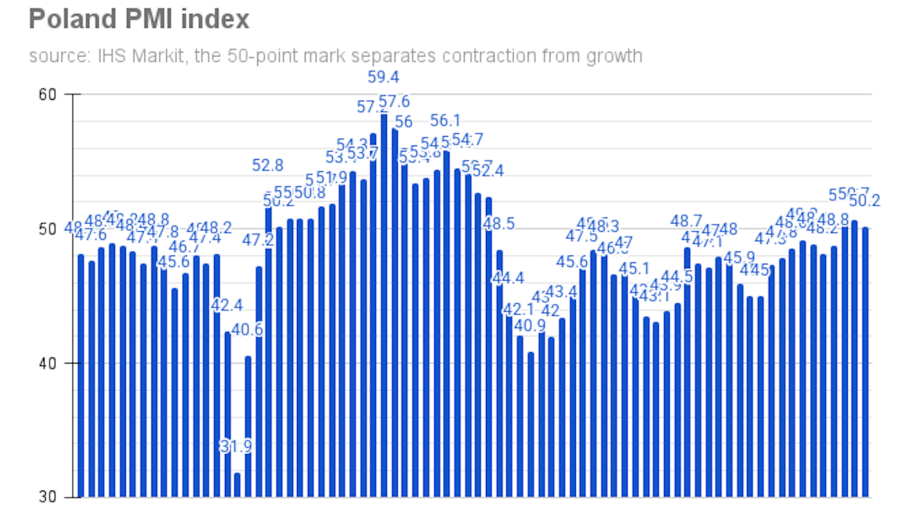Manufacturing Momentum: Poland's Industrial Sector Shows Resilience Despite Cloudy Horizon

Poland's manufacturing sector showed resilience in April, with the Purchasing Managers' Index (PMI) maintaining a delicate balance just above the critical 50-point mark. According to the latest data from economic intelligence firm S&P Global, the index slightly declined by 0.5 points to 50.2, signaling a marginal expansion in industrial activity.
The modest dip suggests that Polish manufacturers are navigating a complex economic landscape, managing to sustain growth despite ongoing challenges. While the decrease is subtle, it provides insights into the current state of the country's manufacturing sector and its ability to maintain momentum in a potentially uncertain economic environment.
Economists and industry analysts will be closely monitoring future PMI readings to gauge the continued health and trajectory of Poland's industrial production in the coming months.
